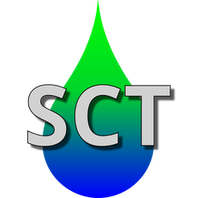Wastewater generated by industrial processes and facilities presents a number of unique challenges. The unique nature of industrial wastewater makes the early stages of conceptual process design critical to the ultimate success of the project. Salt Creek Technologies specializes in helping industrial operators and engineers navigate through these early stages and beyond. Here are a few simple questions that will help any industrial facility start the wastewater treatment system design process:
Where are you generating wastewater?
Identifying the sources and characteristics of your plants wastewater is almost always the first step in developing a treatment system. Understanding these individual streams enables facilities to create the optimal treatment schemes for their plant. These schemes can often include side streaming, reuse, and bypassing treatment steps.
Identifying the sources and characteristics of your plants wastewater is almost always the first step in developing a treatment system. Understanding these individual streams enables facilities to create the optimal treatment schemes for their plant. These schemes can often include side streaming, reuse, and bypassing treatment steps.
When you generating wastewater?
The timing of wastewater generation varies significantly from industry to industry. Some facilities will have very consistent and steady wastewater generation, others will change significantly as the plant transitions from production to sanitation. This variability can have a great deal of impact on the sizing and design of a treatment system.
The timing of wastewater generation varies significantly from industry to industry. Some facilities will have very consistent and steady wastewater generation, others will change significantly as the plant transitions from production to sanitation. This variability can have a great deal of impact on the sizing and design of a treatment system.
What is in your wastewater?
Understanding the specific constituents that make up your wastewater and how they behave plays a major role in the specific processes that will be used in the treatment system. It is also important to consider upset conditions, product change over, and unexpected contaminants or debris that will end up in the wastewater system. Jar testing and bench scale testing can help determine the treatment options that are feasible and inform the sizing of the equipment.
Understanding the specific constituents that make up your wastewater and how they behave plays a major role in the specific processes that will be used in the treatment system. It is also important to consider upset conditions, product change over, and unexpected contaminants or debris that will end up in the wastewater system. Jar testing and bench scale testing can help determine the treatment options that are feasible and inform the sizing of the equipment.
Who will get your wastewater?
In most cases there are three destinations where the treated wastewater will be discharged: a publicly owned treatment works (POTW), a centralized waste treater (CWT) or a nearby body of water. The level and type of treatment required will be heavily impacted by the discharge location and the it's specific requirements.
In most cases there are three destinations where the treated wastewater will be discharged: a publicly owned treatment works (POTW), a centralized waste treater (CWT) or a nearby body of water. The level and type of treatment required will be heavily impacted by the discharge location and the it's specific requirements.
Why are you treating your wastewater?
A treatment system design will change drastically based on the consequences of a discharge limit exceedance. If exceedances cause permit violation notices - and eventual enforcement actions - a treatment system addressing that specific constituent is all but required. However if limit exceedances trigger surcharges or higher fees from the POTW or CWT those costs will need to be weighed against the cost of new or additional treatment equipment.
A treatment system design will change drastically based on the consequences of a discharge limit exceedance. If exceedances cause permit violation notices - and eventual enforcement actions - a treatment system addressing that specific constituent is all but required. However if limit exceedances trigger surcharges or higher fees from the POTW or CWT those costs will need to be weighed against the cost of new or additional treatment equipment.
How will you deal with the waste?
An often overlooked fact of most wastewater treatment processes is that it will generate a waste stream. Depending on the type of waste it can have residual value, it can be reused inside the plant or it may need to be landfilled. Taking these waste streams into consideration during the initial design of the process can have significant impacts on the operating costs of the treatment system.
An often overlooked fact of most wastewater treatment processes is that it will generate a waste stream. Depending on the type of waste it can have residual value, it can be reused inside the plant or it may need to be landfilled. Taking these waste streams into consideration during the initial design of the process can have significant impacts on the operating costs of the treatment system.
Answering these questions with the best available information will go a long way in defining the treatment requirements for your wastewater. Once the treatment requirements are understood, the conceptual design and equipment selection can proceed with a great deal of confidence.
